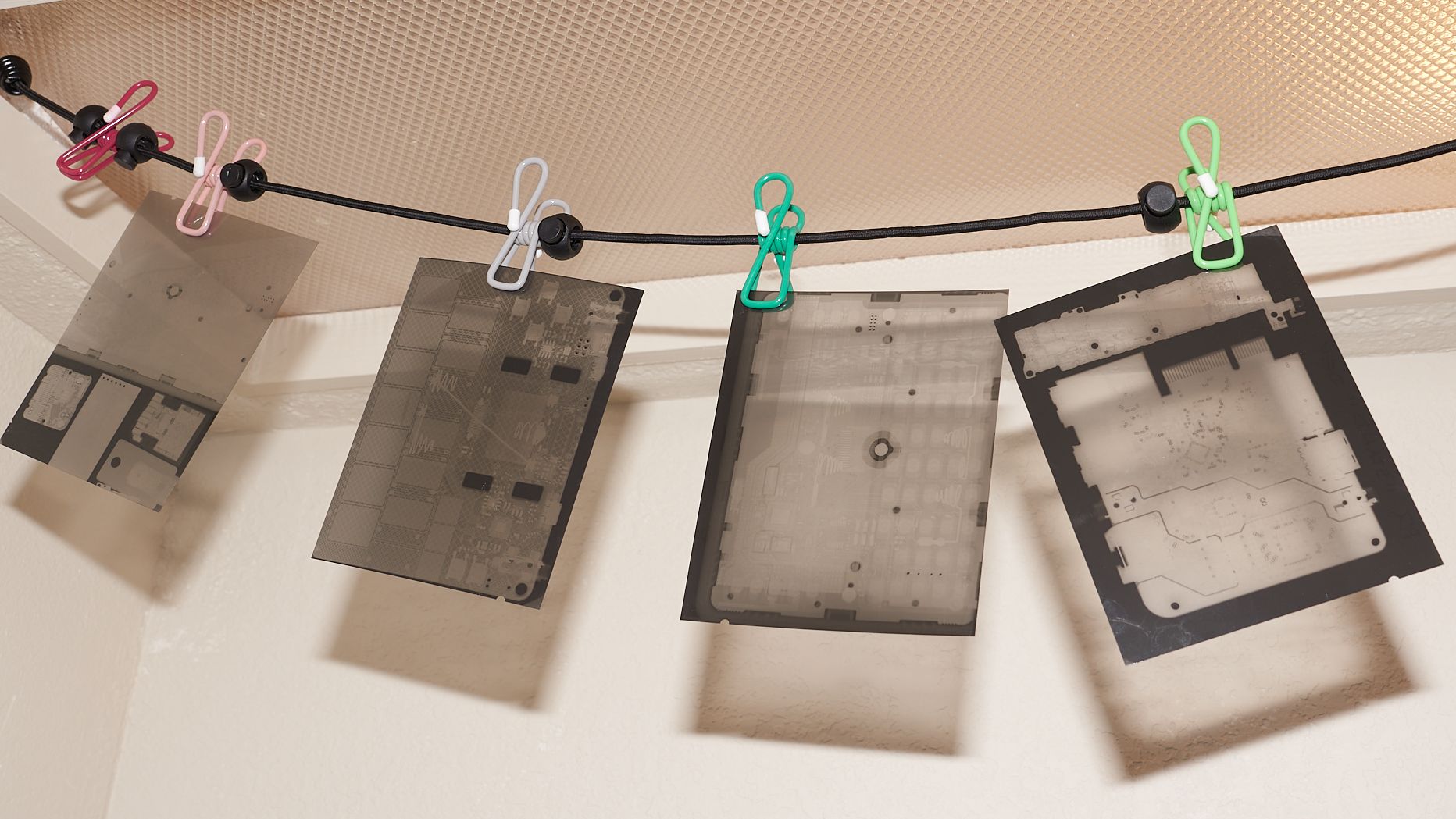#process
https://youtube.com/watch?v=B3GjKTtSRrQ
" 4 Feb 2018
A video about the #Sacred #Secretion, #Christ #Oil and the #True #Anointing!
What is the anointing oil? How does it parallel with the #Resurrection of #Jesus? This video highlights the #inner #biochemical #process or #alchemy of #enlightenment.
If #humanity all realised their inner alchemy, we could create #HEAVEN ON #EARTH!
The Sacred Secretion or Christ Oil has been known throughout different cultures as Kundalini energy and Activation, #Merkabah Ascension, the Great Regeneration, the 3-Fold Enlightenment etc.
This process includes the #birth of the monthly "Jesus seed" or "Christ Lunar Germ" born in the #solar-plexus every month when the moon is in your sun sign. This is the timing of the Sacred Secretion."
its happening all the time to everyone and it can not be stopped !
The #Number #Five Is Nothing Like the Number #Four
Our #brains #process them in completely different ways.
More than 150 years ago, the economist and philosopher William Stanley Jevons discovered something curious about the number four. While musing about how the mind conceives of numbers, he tossed a handful of black beans into a cardboard box. Then, after a fleeting glance, he guessed how many there were, before counting them to record the true value. After more than 1,000 trials, he saw a clear pattern. When there were four or fewer beans in the box, he always guessed the right number. But for five beans or more, his quick estimates were often incorrect.
Jevons’s description of his self-experiment, published in Nature in 1871, set the “foundation of how we think about numbers,” Steven Piantadosi, a professor of psychology and neuroscience at UC Berkeley, says. It sparked a long-lasting and ongoing debate about why there seems to be a limit on the number of items we can accurately judge to be present in a set.
Now a new study in Nature Human Behaviour has edged closer to an answer by taking an unprecedented look at how human brain cells fire when presented with certain quantities. Its findings suggest that the brain uses a combination of two mechanisms to judge how many objects it sees. One estimates quantities. The second sharpens the accuracy of those estimates—but only for small numbers.
It’s “very exciting” that the findings connect long-contested ideas to their neural underpinnings, Piantadosi, who was not involved in the study, says. “There’s not many things in cognition where people have been able to pinpoint very plausible biological foundations.” Although the new study does not end the debate, the findings start to untangle the biological basis for how the brain judges quantities, which could inform bigger questions about memory, attention, and even mathematics.
The ability to instantly judge the number of items in a set doesn’t have anything to do with counting. Human infants have this number sense even before they learn language. And it’s not limited to humans: Monkeys, bees, fish, crows, and other animals also have it. A monkey needs to be able to quickly judge the number of apples in a tree, and also how many other monkeys it’s competing against for those apples. A lion, when confronted by other lions, has to decide whether to fight or flee. Honeybees need to know which area has the most flowers for foraging. A guppy has better chances of escaping a predator if it joins a shoal. “The bigger the shoal, the safer that little fish is,” Brian Butterworth, a cognitive neuroscientist at University College London who was not involved in the new work, says.
This innate number sense is therefore crucial to survival, increasing an animal’s chances of finding food, avoiding predators, and ultimately reproducing. “It simply pays off for the survival of an animal to be able to differentiate numeric quantities,” says Andreas Nieder, a professor of animal physiology at the University of Tübingen, in Germany, who co-led the new study. The fact that this ability is found in diverse animals, from insects to humans, suggests that it arose a long time ago, and its neural basis has interested cognitive scientists for decades.
In 2002, when Nieder was working with the neuroscientist Earl Miller at MIT as a postdoctoral fellow, they published one of the first pieces of evidence that numbers are linked to specific neurons. In a behavioral experiment using monkeys, they found that these neurons, which are located in the prefrontal cortex, where higher-level processing takes place, have preferred numbers—favorite numbers that, when perceived, make the cells light up in brain scans.
For example, some neurons are tuned to the number three. When they’re presented with three objects, they fire more. Other neurons are tuned to the number five and fire when presented with five objects, and so on. These neurons aren’t exclusively committed to their favorites: They also fire for numbers adjacent to them. (So the neuron tuned to five also fires for four and six objects.) But they don’t do it as often, and as the presented number gets further away from the preferred number, the neurons’ firing rate decreases.
Nieder was excited by the deeper questions the work presented about the development of mathematical ability. Numbers lead to counting, and then to symbolic number representations, such as Arabic numerals that stand in for quantities. Those symbolic numbers underpin arithmetic and mathematics. “For us to know how numbers are represented [in the brain] is setting the foundation for everything that’s coming later,” Nieder says.
He went on to learn as much as he could about number neurons. In 2012, his team discovered that the neurons respond to their preferred numbers when they’re estimating the quantity of a set of sounds or visual items. Then, in 2015, they showed that crows also have number neurons. In a show of “amazing crow behavior,” Nieder says, the birds could correctly peck the number of dots or Arabic numerals displayed to them.
However, no one had identified number neurons in humans. That’s because studying the human brain is notoriously difficult: Scientists usually can’t access its activity ethically in experiments while people are alive. Brain-imaging tools don’t have the resolution needed to distinguish individual neurons, and scientific curiosity alone can’t justify implanting invasive electrodes in the brain.
To peer into a living brain, Nieder needed to find patients who already had electrode implants and who would consent to being part of his research. In 2015, he contacted Florian Mormann—the head of the cognitive and clinical neurophysiology group at the University of Bonn, who is one of the few clinicians in Germany who does single-cell recordings in human patients—to see if he and his patients would join Nieder’s search for human number neurons. Mormann said yes, and their teams got to work examining the brain activity of his epilepsy patients, who had previously had electrodes implanted to improve their medical care.
Nine patients did simple calculations in their heads while researchers recorded their brain activity. Sure enough, in the data, Nieder and Mormann saw neurons firing for their preferred numbers—the first time number neurons had been identified in the human brain. They published their findings in Neuron in 2018.
Neuroscientists are of course driven to understand the mind, Nieder says, so “finding such neurons in the human brain is extremely rewarding.” To continue their quest, Nieder and Mormann launched a new study to find out how the neurons represent odd and even numbers. The researchers recruited 17 epilepsy patients and showed them flashes of dots, ranging in number from one to nine, on computer screens. The participants indicated whether they saw an odd or even number while electrodes recorded their brain activity.
Over the next few months, as Esther Kutter, a graduate student studying with Nieder, analyzed the resulting data, she saw a clear pattern emerge—right around the number four. The data, which comprised 801 recordings of single neurons firing, showed two distinct neural signatures: one for small numbers and one for large. Above the number four, the neurons’ firing for their preferred number grew progressively less precise, and they erroneously fired for numbers close to the preferred one. But for four and below, the neurons fired precisely—with the same small amount of error whether firing for one, two, three, or four objects. The misfiring in response to other numbers was largely absent.
This surprised Nieder. He hadn’t previously seen this boundary in his animal studies: Those experiments had included numbers only up to five. He hadn’t set out to probe Jevons’s observation, nor did he expect to see a neural boundary confirm what behavioral studies had found. Up until that point, he had been convinced that the brain had just one mechanism for judging numbers—a continuum that got fuzzier the higher the numbers climbed.
The new data changed that for him. “This boundary popped out in different ways,” Nieder says. The neural patterns suggested that there is an additional mechanism that suppresses smaller-number neurons from firing for the wrong numbers. Piantadosi and Serge Dumoulin, the director of the Spinoza Centre for Neuroimaging, in Amsterdam, had both previously published papers supporting the idea that only one mechanism manages the neuronal interpretation of numbers. Yet they were struck by Nieder and Mormann’s new data showing that there are, in fact, two separate mechanisms.
It’s “real validation that large and small numbers have different neural signatures,” Piantadosi says. But he cautioned that two signatures can emerge from a single process; whether it should be described as one mechanism or two is still up for debate. “This is just beautiful,” Dumoulin says. “This type of data wasn’t available, and certainly not in humans.”
However, one more major uncertainty remains. The researchers didn’t study the prefrontal or parietal cortices, where the majority of number neurons are located in monkeys. Instead, because of where the patients’ electrodes were inserted, the study focused on the medial temporal lobe, which is involved in memory. It isn’t the first place in the human brain you’d investigate to understand numbers, Nieder says. “On the other hand, the medial temporal lobe is also not the worst place to look for such neurons.”
That’s because the medial temporal lobe is linked to number sense. It’s active when children learn calculations and multiplication tables, and it’s intimately connected to regions where number neurons are thought to lie, Nieder says. It’s not clear why number neurons are present in this region, Butterworth says. “The things that we thought were specific to the parietal lobe seem to be reflected also in parts of the medial temporal lobe.”
One possibility is that these aren’t number neurons at all. Pedro Pinheiro-Chagas, an assistant professor of neurology at UC San Francisco, thinks these could instead be concept neurons, which are located in the medial temporal lobe and are each linked to specific concepts. For example, one famous study found a concept neuron that responded directly and specifically to images of the actor Jennifer Aniston. “Maybe they are not finding the mechanisms of the number sense … Maybe they’re finding concept cells that are also applied to numbers,” Pinheiro-Chagas says. “As you have the concept of Jennifer Aniston, you could have the concept of three.”
The level of analysis is “just really outstanding,” says Marinella Cappelletti, a cognitive neuroscientist at Goldsmiths, University of London. The researchers provide “compelling evidence” for dual mechanisms in the medial temporal lobe. She thinks it would be valuable, however, to see whether these mechanisms operate in other brain regions as well, if the opportunity presents itself. “I see these findings as looking into a window,” Cappelletti says. “It would be nice to open it up a bit more and tell us more about the rest of the brain.”
The new findings have clear parallels to the limitations of working memory. People can hold only a certain number of objects in their awareness, or working memory, at one time. Experiments show that number is also four. The agreement between the boundary of number sense and that of working memory is “hard to ignore,” Cappelletti says.
The mechanisms may be related. In previous studies of number sense, when a participant stopped paying attention, they lost their ability to precisely judge the true value of numbers four and below. That suggests that the small-number system, which suppresses adjacent misfirings with small numbers, might be intimately tied to attention. Nieder now hypothesizes that the small-number system turns on only when you’re paying attention to what’s in front of you. He’s hoping to test this idea in monkeys, in addition to looking for a neural boundary at four that their experiments haven’t yet captured.
The latest research “seems to be the beginning of a new leap” in our understanding of number perception, Pinheiro-Chagas says, which could have useful applications. He hopes it will be fodder for discussions in math education and even artificial intelligence, which struggles with numerosity perception. Large language models are “pretty bad at counting,” he says. “They are pretty bad at understanding quantities.”
Better characterizing number neurons can also help us understand who we are. Next to the language system, number representation is humans’ second-biggest symbol system. People use numbers frequently and in a variety of ways, and we and our ancestors have used math to describe the world for millennia. In that sense, math is a fundamental part of being human. And, as this study starts to show, this calculation prowess might all stem from a finely tuned network of neurons in the #brain.
Processus de création artistique ou comment une maladresse a libéré ma créativité!
Je vous raconte comment une goutte de café renversée sur un tirage photo m'a permis de me lâcher et de tester des choses que j'avais en tête mais que je n'osais pas essayer pour pas gâcher un beau tirage...
Bientôt les photos de mes dernières créations mixmedia.
#creation #artiste #photographe #mixmedia #mixmediaart #cafe #encre #feutre #liner #art #creativite #liberation #artist #photographer #plasticienne #drawing #dessin #coffee #ink #pen #freedom #creative #process #processus

https://freemantv.com/awakening-process-james-true/
#freeman #freezone #freemanfly
Do you remember learning of plastic coffins and FEMA camps in the 90’s and have the very real sense of impending doom as most do now? Time has tempered our reactions over the decades but, we remember how frightening that time was and can relate to your feelings now. What starts the awakening process? How do we explain what we see? Why do others not see the world through the same lens?
The eyes are a stage the mind palace uses to play a scene. Our real-world is received through the pineal needle in the center of our head. Our senses are here to only show us a reality our system can stomach. All of our vision and hearing is restricted by melanin, dopamine, and the emotional filters of the amygdala. Just as truth is suppressed in society, so is it suppressed by our amygdala. It is trying to protect us. This is how we come to learn about aperture. Aperture is the lensing of consciousness.

#EdwardSnowden #FreeAssangeNOW
#Assange has been charged for #revealing #state #crimes - #unprecedented #charges for #publishing in the #public #interest.
" #JulianAssange is one of the #longest-serving #political #prisoners in the #western #world. Every level of the #case #against him has been shot through with #corruption and the #abuse of #process.
#dropthecharges #wikileaks #freespeech #weareallassange #quote

"We have witnessed the #gradual #killing of #Julian through #psychological #torture, relentless #disruption of #proceedings and #due #process, right before our eyes. This is what we are #fighting #against." ~ #JulianAssange's #father, #JohnShipton
#assange #shipton #quote #truthteller #freeassangenow #dropthecharges #freepress #freedomofspeech #journalismisnotacrime #firstamendment #noextradition #freeassange #weareallassange

Doctors Warn Assange May Not Survive Appeals Process
https://www.youtube.com/watch?v=IQ6qH1PNDtQ
https://consortiumnews.com/2021/07/31/watch-cn-live-doctors-warn-assange-may-not-survive-appeal-process/
On #Aug11, the #UK #HighCourt will hear the #US argument against its barring of #extradition on #medical grounds.
#JulianAssange’s #deteriorating #health in #prison #threatens his very #survival during the long #appeals #process.
#assange #wikileaks #publisher #journalism #freepress #truth #truthteller #survive #doctors4assange #fragile #mental #psychological #torture #torment #isolation #empire #humanrights #democracy #justice #civil #liberties #freespeech #journalismisnotacrime #dropthecharges #joelauria #elizabethvos #doctors #jillstein #williamhogan #bobgill #lissajohnson #suewareham #dereksummerfield #freeassange #doctorsforassange #weareallassange





